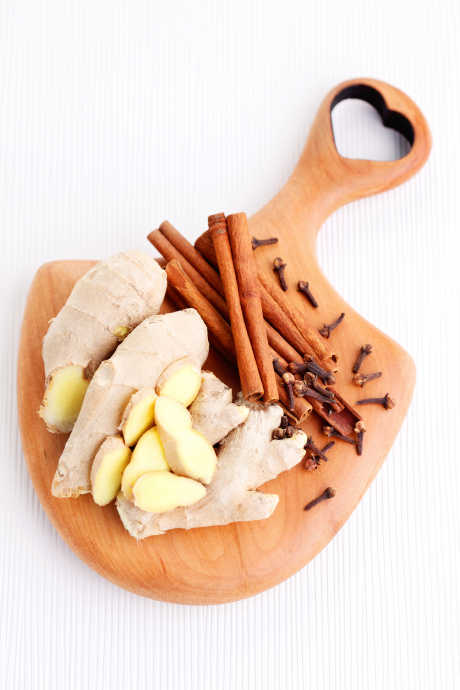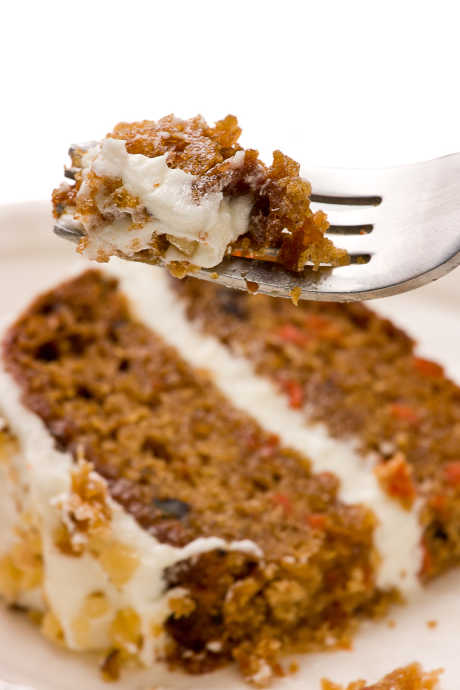Carrot Cake: Eat It for the Spices and the Cream Cheese Frosting
Posted by Julie on Mar 25th 2020
Carrot cake is a misnomer. Nobody eats this cake because they love carrots. In fact, if you make it right, you can’t even taste the carrots. Some people love carrot cake for the spices, but everyone loves carrot cake for the cream cheese frosting. In this post, we’ll share some tips for making your carrot cake the best it can be, both the cake and the frosting.
Carrot Cake: Dry Ingredients
We’ll start with the dry ingredients in carrot cake, as they are pretty straightforward no matter whose recipe you use. You’ll need all-purpose flour, plus four traditional baking spices: cinnamon, cloves, ginger, and nutmeg. You can grind them from whole spices or use ground versions. If you use ground spices, be sure they’re less than three years old. Ground spices lose their flavor after two to three years.

You may include nuts in your carrot cake, unless you prefer it plain or are baking for someone with a nut allergy. Walnuts and pecans are the top choices. Toast them first for added flavor, either on a baking sheet or in a skillet on the stovetop.
Carrot Cake: Wet Ingredients
The wet ingredients are where many carrot cake recipes differ. However, one point where we found agreement was the carrots. Grate or shred them yourself; don’t rely on bagged pre-shredded carrots. The bagged variety aren’t as fresh and moist, and the texture of your cake will suffer. Bon Appetit recommends grating your carrots as fine as possible, so they’ll mix evenly into the batter. Serious Eats notes the volume of grated carrots will vary based on how fine or chunky they are. That’s why we like how their recipe calls for a two-pound bag of whole carrots; you can shred them however you like, and the volume by weight will be the same.

You’ll find most carrot cake recipes call for oil instead of butter. Sally, from Sally’s Baking Addiction, explains that cakes with strong flavors like carrot cake don’t benefit from the flavor added by butter, so oil is a better option. Plus, it helps carrot cake stay moist longer than other cakes. She uses butter for cakes with more delicate flavors, like white or yellow cake. But we have to admit we’re tempted by this recipe from Serious Eats, which uses brown butter to add another dimension to carrot cake.
Bon Appetit cautions against adding other fruits like coconuts and pineapple. It’s not just a matter of taste; they will alter the proportions of wet and dry ingredients, which might yield sub-par results.
But taste is an important factor when making carrot cake, particularly when it comes to those mix-ins. We love this post about carrot cake by Allison Robicelli for TASTE for several reasons. One, it’s hilarious (though we caution you there’s some language and innuendo). Two, her writing credits include Food52, Eater, Food Network -- three of our favorite food sites -- and she’s written her own cookbook. Three, we agree wholeheartedly with her views on what belongs in carrot cake and what doesn’t.
Carrot Cake: Mixing, Baking, and Decorating
One drawback of carrot cake is that it can be a bit dense. However, both Bon Appetit and Serious Eats offer the same helpful recommendation for making carrot cake more light and airy. Use the whisk attachment on your stand mixer to beat the eggs and sugar until they are creamy. Then keep the mixer going while you slowly add the oil or brown butter, depending on which recipe you’re using.
Once your cake batter is mixed, keep this recommendation from Sally’s Baking Addiction in mind when you prepare your cake pans. Cut out rounds of parchment paper to fit inside each pan to help prevent your cake layers from sticking. Be sure to grease and flour the sides of the pan as well as the parchment. When the layers are finished baking, transfer them to cooling racks until they are ready to be frosted.

Even if Allison Robicelli’s carrot cake commentary didn’t interest you, her recipe might. While the cake is similar to other recipes we’ve seen, the cream cheese frosting piqued our curiosity. It starts on the stovetop with a mixture of flour, granulated sugar, cornstarch, and half and half. Stir over medium heat until it thickens, and then transfer to your stand mixer and beat until it’s cool. Add the cream cheese gradually, and beat the frosting until it’s light and spreadable. You can add powdered sugar to thicken it, if necessary. Because there’s no butter and less sugar in this frosting, the flavor of the cream cheese stands out.
Finally, while you can press toasted nuts onto the sides and top of your frosted cake, we want to try making these carrot roses from Serious Eats. Start by peeling the carrots, and then use your peeler to cut long, flat strips from each carrot. Make a simple syrup on the stovetop from sugar and water, and then dip each carrot strip in the simple syrup. Let them cool a bit, and then roll each one into a rose shape and pinch the bottom to make the layers of carrot spread open like petals. Add them to the top of your cake as a sweet decoration.

